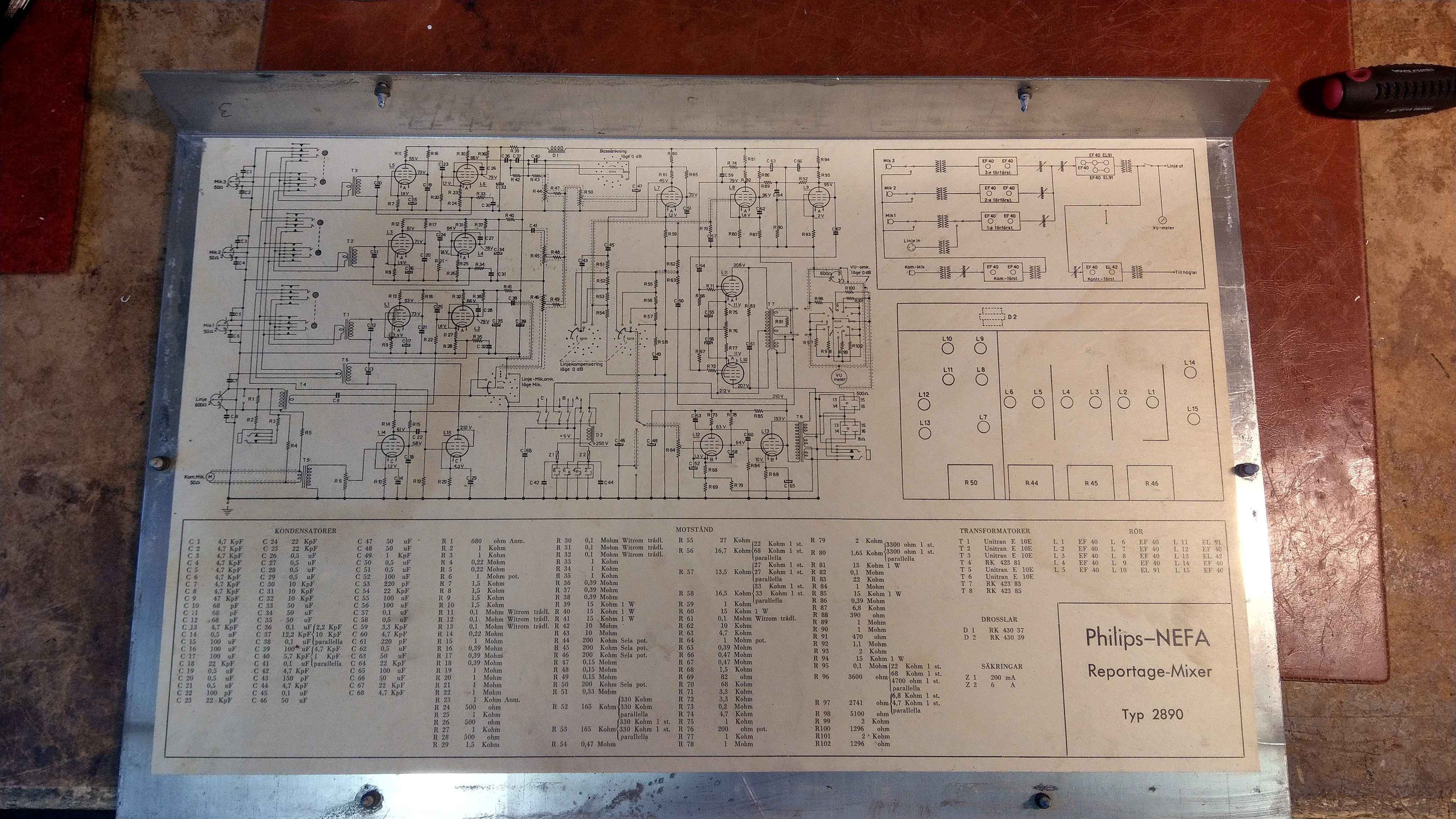Conviction
Well-known member
Hi all!
I recently acquired this gray monster: a three-channel tube mixer/console made by Philips-NEFA for the Swedish Radio around1955-56 1953-54. It has some features that I don't see much use for, like the commando (talkback) amplifier. Not sure how the designer intended one to use it (see the schematic/block diagram). There’s also a pre-listening function for incoming line level signal. Typical early broadcast feature.
The speaker amplifier (8 & 500 ohms) could prove useful for re-amping etc.
When I bought it I was certain it would be full of Jørgen Schou input transformers, but for some reason the designer(s) chose Unitran E 10E (JS was otherwise the go-to make). The Unitran’s are wired for 50 ohms pri, but has 200- and 500-ohms taps as well. The rest of the iron is Philips’ own creations.
Tube lineup for the preamp section is two EF40’s per channel. The output make use of EL91 in push-pull. Should be able to output quite a high level. Haven’t measured anything yet. Listening amp consists of a EF40 and a EL42.
I’ve slowly started to go through it, replacing dried out electrolytics etc. At some point I think I’ll (have to) change the input wiring, since the isolation is made of rubber and it literally falls apart if you bend it even the slightest.
Also: one of the 100k plate resistors on channel 1, a wire-wound with “bifilar” printed on it, is cracked. Should I replace it with a modern metal film? Or am I missing something here? Wire-wound=stability? What was the intention?
Well, I’ll update this thread once it’s up to par. It’s a nice piece of equipment for sure. Can’t say I find much use for a 3-to-1 mixer though. As is, I kinda see it as a huge and rather impractical (unjustified, space) one-channel preamp.
Some photos (yes, the schematic is glued to the bottom, need to take a high res photo and Photoshop it a little):
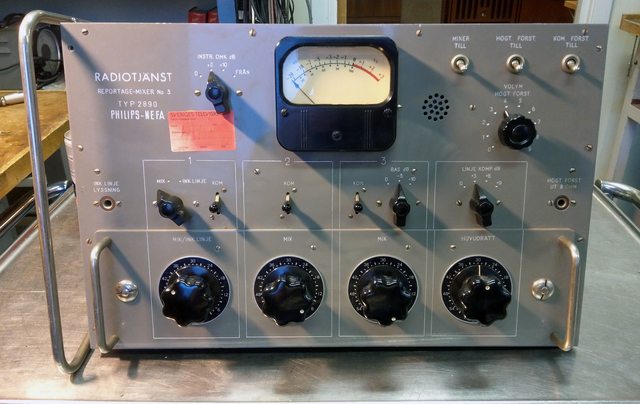
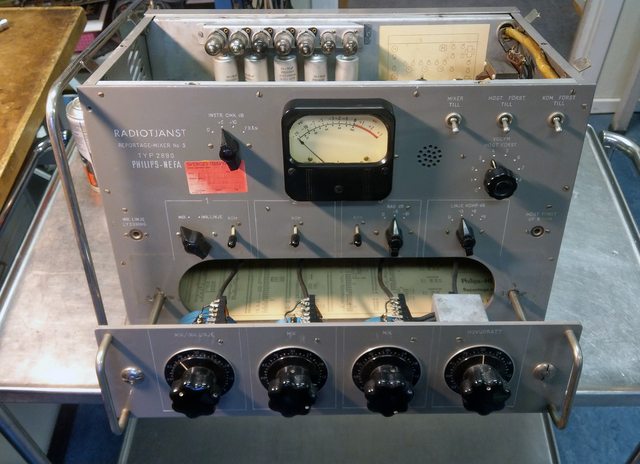
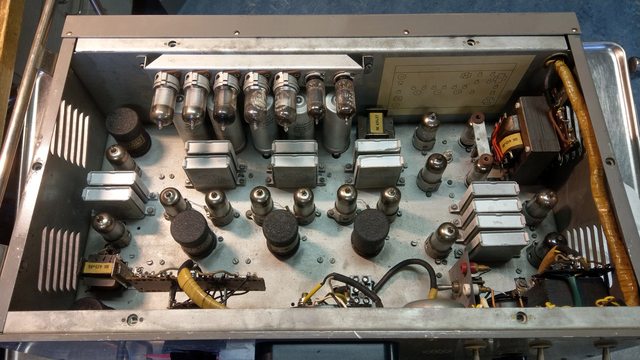
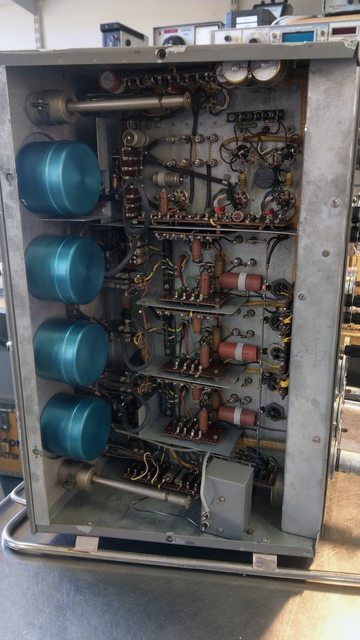
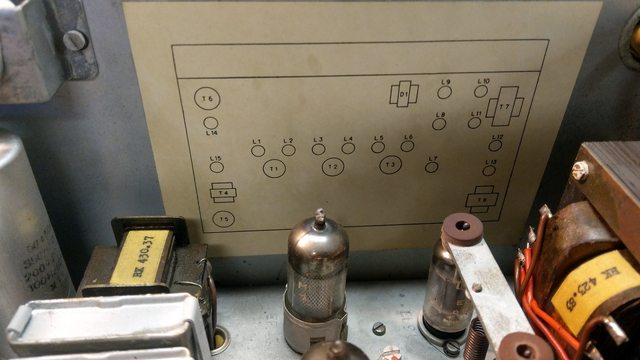
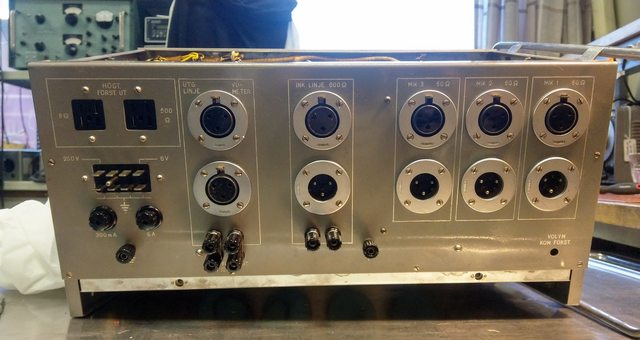
I recently acquired this gray monster: a three-channel tube mixer/console made by Philips-NEFA for the Swedish Radio around
The speaker amplifier (8 & 500 ohms) could prove useful for re-amping etc.
When I bought it I was certain it would be full of Jørgen Schou input transformers, but for some reason the designer(s) chose Unitran E 10E (JS was otherwise the go-to make). The Unitran’s are wired for 50 ohms pri, but has 200- and 500-ohms taps as well. The rest of the iron is Philips’ own creations.
Tube lineup for the preamp section is two EF40’s per channel. The output make use of EL91 in push-pull. Should be able to output quite a high level. Haven’t measured anything yet. Listening amp consists of a EF40 and a EL42.
I’ve slowly started to go through it, replacing dried out electrolytics etc. At some point I think I’ll (have to) change the input wiring, since the isolation is made of rubber and it literally falls apart if you bend it even the slightest.
Also: one of the 100k plate resistors on channel 1, a wire-wound with “bifilar” printed on it, is cracked. Should I replace it with a modern metal film? Or am I missing something here? Wire-wound=stability? What was the intention?
Well, I’ll update this thread once it’s up to par. It’s a nice piece of equipment for sure. Can’t say I find much use for a 3-to-1 mixer though. As is, I kinda see it as a huge and rather impractical (unjustified, space) one-channel preamp.
Some photos (yes, the schematic is glued to the bottom, need to take a high res photo and Photoshop it a little):









